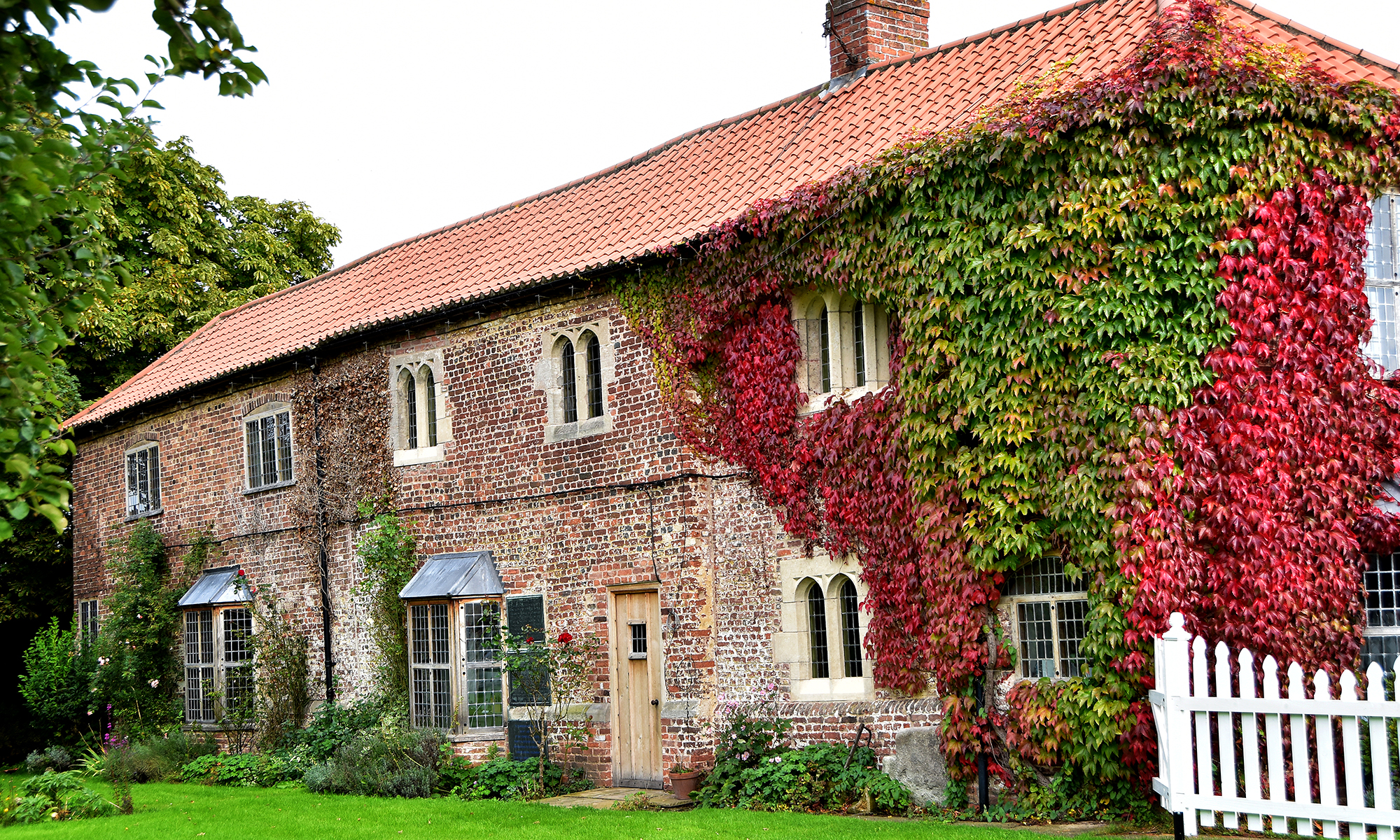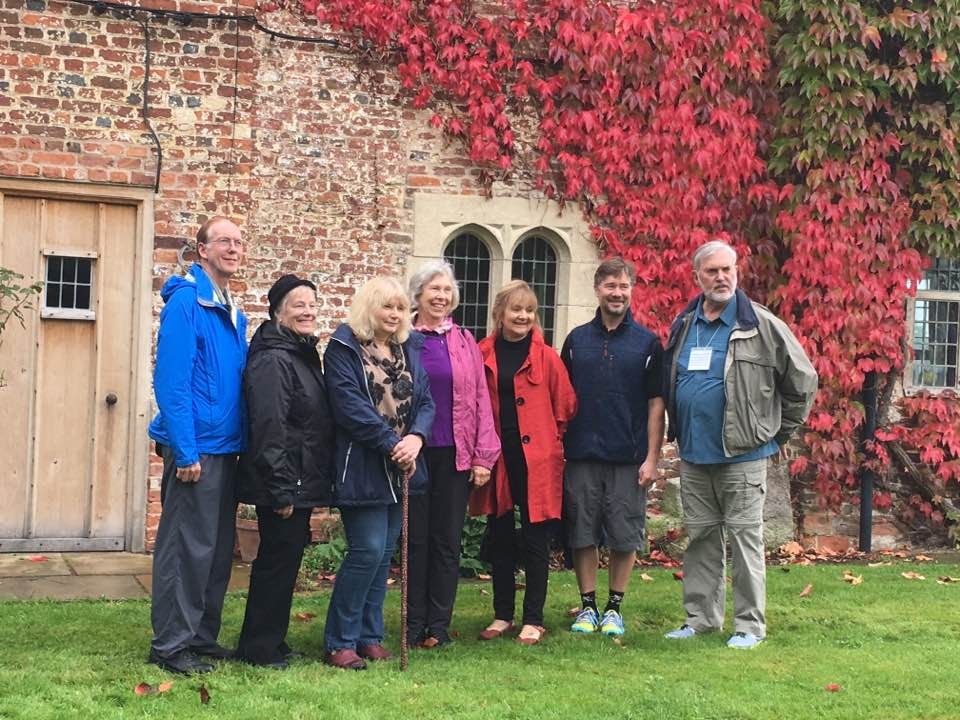

- Contact Us
- Search
-
Mayflower400 partner destinations:
Virtual Voyages: The Homes of Brewster and Bradford
Discover the homes, places and roots of two of the leading figures in the Mayflower story - William Brewster and William Bradford - in the third of our Virtual Voyages series.
Explore the historic villages clustered together in north Nottinghamshire and South Yorkshire where Brewster and Bradford were born, go inside centuries-old churches that go to the very origins of the Mayflower story and peek inside the new Pilgrim Gallery in nearby Retford that tells their stories.
Special thanks to:
Isabelle Richards, Heritage Engagement Officer at Bassetlaw District Council
Peter Swincoe, Warden at All Saints' Church, Babworth
Adrian Gray, Pilgrims & Prophets Tours, Retford
With thanks to:
Pilgrims Gallery, Bassetlaw Museum, Retford, and St Helena's Church, Austerfield.
The Bassetlaw Museum and The Pilgrims Gallery

The museum features a map of the greater Retford area, which saw the rise of the Mayflower Pilgrims and was a real hotbed of religious non-conformity in the 17th century.
It spreads from here in Retford to South Yorkshire and also over into Lincolnshire, and in this area we saw the rise of a lot of people who went on to play key roles in the Mayflower story - including William Bradford, William Brewster, John Robinson and John Smith.
Brewster is a really crucial figure, and the Pilgrims Gallery contains a reimagined space that would perhaps been in Scrooby Manor depicting his study, and we have an excellent local actor portraying him a mirror where he appears and tells four stories from his life.
These interactives are really based on his point of view as a Pilgrim elder.
William Brewster and Scrooby Manor

William Brewster came from Scrooby and had a great influence on the Pilgrims, perhaps encouraging them to make that move to Holland.
The Brewster family lived at Scrooby Manor and were the bailiffs for the Archbishop, so William would have been fairly well-off, with his dad also being the postmaster.
He did go off to Cambridge was a young lad, but he wasn't there for very long.
Brewster was employed by William Davidson, who was one of the ambassadors of Elizabeth I - and that's how he ended up travelling to Holland and seeing the tolerance that was found there at the time.
When the Mayflower left for America, the group didn't have a pastor or any proper priests with them.
Robinson, who was considered to be the leader, remained in Leiden and Brewster, being one of the elders, became the spiritual leader of the colonists.
Susanna White

Recent information uncovered by historian Sue Allen shows that Susanna White was born Susanna Jackson.
The Jackson family were from South Yorkshire and ended up in Scrooby as well, so she would have grown up knowing Brewster.
We believe that Susanna's dad was probably the 'Jackson' who was arrested with Brewster right before the group went to Holland.
And that's where she would have met her first husband, William White, before they both sailed on the Mayflower.
William sadly died before setting foot in America, and Susanna had their son, Peregrine (which means 'Pilgrim' in Latin), on the Mayflower while they were anchored off the coast of Cape Cod - making him the first person born in what would become Plymouth Colony.
Susanna would also have the Colony's first marriage when she wed Edward Winslow, and together they had a son named Josish who would later become a governor.
All Saints' Church, Babworth

Babworth is a really picturesque church which is set in woodland, and as you travel down the lane you imagine that it's been tucked away like this forever.
But actually that lane was a more important road during the Pilgrims' time.
Babworth was already a centre of non-conformity before Richard Clyfton got there, but Clyfton really fostered that further and had William Bradford and William Brewster coming to listen to his sermons, with Brewster repeating them in the afternoon at Scrooby as well.
Separatists often objected to the use of the prayer book, they didn't like to wear the robes surpluses; they also didn't make the sign of the cross of baptism and they didn't observe the feasting days and fasting days that the main church did.
Bradford, at around the age of 12, got quite into the scriptures and started to come under Clyfton's influence, so he must have walked back to hear the sermons and he would have met Brewster there as well.
We also hear that Bradford's uncles and perhaps other villages were a bit scornful and dismissive of their religious bent that he was getting into.
William Bradford and St Helena's Church

William Bradford was born in Austerfield in 1590 and was an orphan, but with moderated well-connected relatives.
Bradford's importance rests on two things: He kept a journal of his life up to 1646, which was later discovered and published as 'Of Plimoth Plantation'.
The second reason is that he was governor of Plymouth Colony for many years after 1621, following the death of John Carver.
A few hundred yards from Bradford's house in Austerfield lies his old church, St Helena's.
Austerfield has a place in Christian history long before Bradford, though, for in 702AD it was the site of an important conference between the bishops of the Celtic and the Roman Catholic churches to decide their differences over issues such as the date of Easter and the seniority of bishops like Wilfred.
The most amazing feature of this church will strike you before you've even entered it, as above the door is a carving caught a tympanum of the winged dragon.
It is believed that this was intended to scare the Devil away from the church.
Another treasure here is the stained-glass window commemorating William Bradford and the Mayflower voyage.
At the end of the 1800s, there was growing interest from America in forming a memorial to Bradford, so a new north aisle was built and, much later, a wonderful window was installed in 1989.
Another interesting feature is the font, which was rediscovered in a farmyard and is believed by many to have been the from where Bradford was christened.
Austerfield Manor House

The main link between William Bradford and the village of Austerfield is now the old Manor House where he lived and which is remarkably well-preserved.
This is a small timber-framed house, much of which dates from the 1500s.
Because Bradford has so many descendants in America, it is effectively the ancestral home of thousands of people.
William Butten

Between St Helena's Church and the Manor House is a very striking plaque at the entrance to a new housing estate called Butten Meadow.
This shows a picture of the Mayflower and commemorates a boy named William Butten who died on the journey across The Atlantic.
No one knows for certain where William came from, but the surname 'Butten' was used around Austerfield, and there is a lane called Billy Button Lane a few miles away at Tolworth.
William had lived with the Leiden separatists, so some connection is quite possible.
Sign up for the latest Mayflower 400 news
You'll be the first to hear the latest Mayflower news, events, and more.
Log In
Register
Mayflower 400 Proudly Supported by our National Sponsors and Funding Partners






